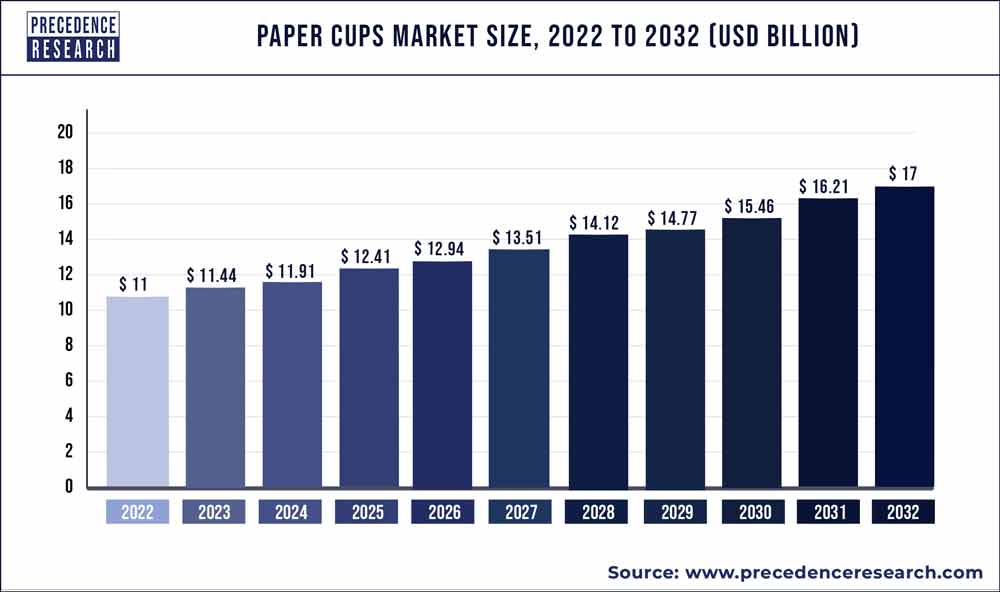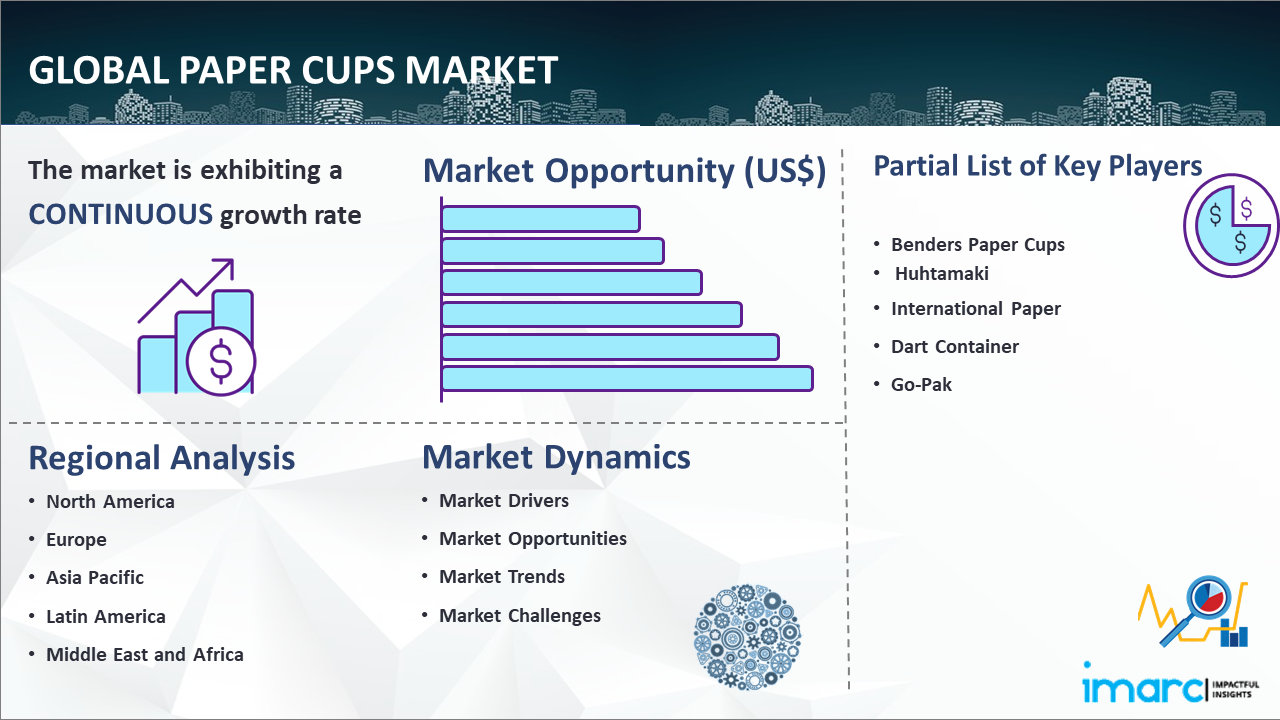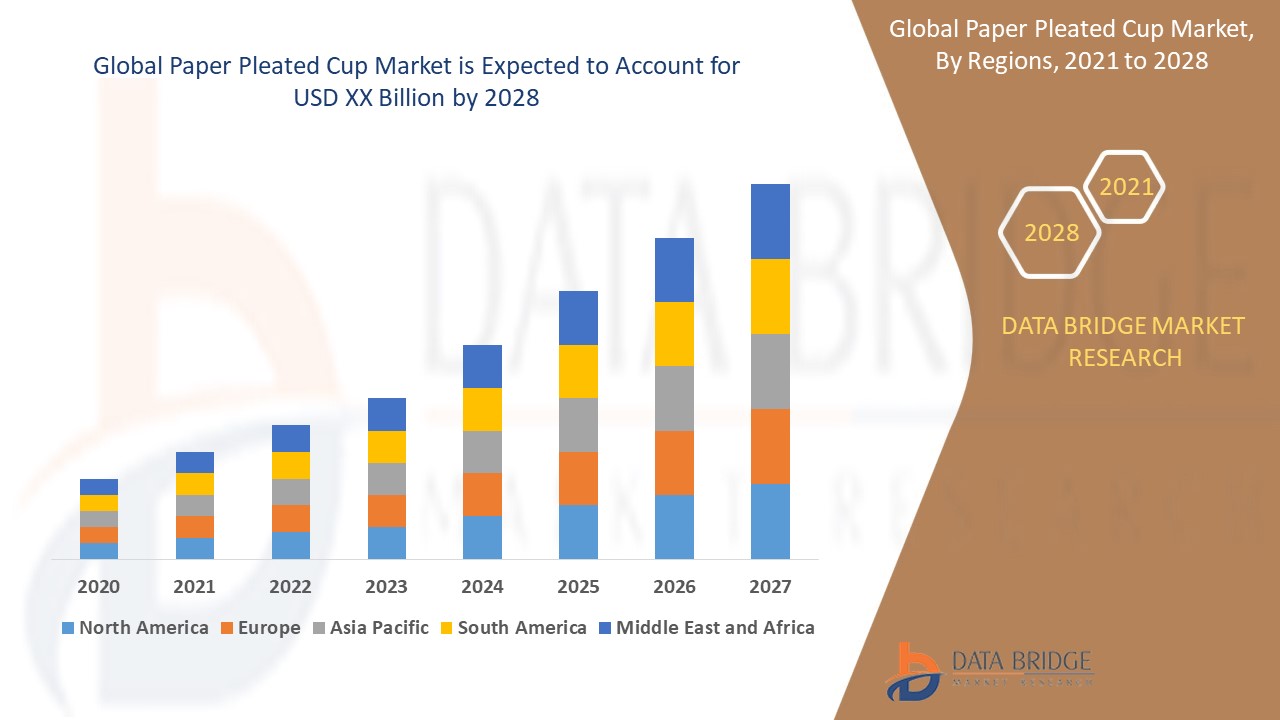Is the Paper Cup Industry Thriving?
Exploring the Paper Cup Industry: Market Trends, Challenges, and Future Outlook
Market Overview and Growth Potential
The paper cup industry has experienced remarkable growth recently, propelled by several factors including the expansion of the food and beverage sector, the proliferation of quick-service restaurants and cafes, and advancements in paper cup manufacturing technology. In 2023, the global market size for paper cups reached US$ 6.8 billion, marking a substantial milestone. Projections indicate that by 2032, this market is anticipated to grow to US$ 9.0 billion, reflecting a compound annual growth rate (CAGR) of 3.1% during the period from 2024 to 2032. This growth trajectory underscores the industry’s increasing significance within the broader packaging sector, driven by evolving consumer preferences for convenience and sustainability. As demand for portable and disposable beverage containers continues to rise, the paper cup industry is poised to play a pivotal role in meeting these needs while embracing technological innovations that enhance efficiency and environmental responsibility.
Current Market Size
The paper cup industry, currently valued at US$ 6.8 billion, continues to show a robust growth trajectory. This growth is fueled by a rising consumer preference for convenience and the expanding trend of on-the-go consumption, solidifying the paper cup industry’s pivotal role within the packaging sector. As lifestyles become busier, the demand for portable and disposable beverage containers like those provided by the paper cup industry is on the rise. This sector not only caters to the practical needs of consumers but also aligns with the increasing emphasis on sustainability, with many manufacturers exploring eco-friendly materials and production methods. The competitive landscape of the paper cup industry reflects ongoing innovations aimed at enhancing product design, material efficiency, and environmental compatibility. These advancements are crucial as the industry strives to meet evolving consumer expectations while addressing environmental concerns associated with disposable packaging.
Key Drivers for Growth
Several key drivers propel the growth of the paper cup market. The burgeoning food and beverage sector, particularly the surging popularity of hot beverages such as coffee and tea, serves as a primary catalyst. Additionally, the proliferation of quick-service restaurants and cafes has substantially increased the demand for paper cups as convenient serving options.
Technological innovations in paper cup manufacturing have also been instrumental in driving market expansion. Advancements such as enhanced insulation capabilities and leak-proof designs not only improve the functionality of paper cups but also cater to evolving consumer preferences for efficient and reliable beverage containers.
These factors collectively underscore the dynamic growth trajectory of the paper cup industry, highlighting its essential role in meeting the needs of modern consumers and businesses alike.
Impact of Market Trends
Market trends significantly influence the demand for paper cups. A notable trend is the rising prominence of quick-service restaurants, which has spurred a marked increase in the consumption of takeout food and beverages. This shift towards on-the-go dining habits has naturally driven up the usage of paper cups as convenient and portable packaging solutions.
Moreover, the growing adoption of eco-friendly practices in the packaging industry has propelled the popularity of paper cups as a sustainable alternative to plastic cups. With heightened awareness of environmental impact, consumers and businesses alike are increasingly opting for eco-friendly packaging options, further boosting the demand for paper cups.
Additionally, the burgeoning trend of online food delivery has significantly contributed to the rise in paper cup usage. These cups are extensively employed for packaging beverages and meals ordered through digital platforms, reflecting their practicality and suitability for delivery services.
In essence, these market trends underscore the pivotal role of paper cups in catering to evolving consumer preferences and industry demands. As quick-service dining, eco-consciousness, and online food delivery continue to shape consumer behavior, the paper cup industry remains well-positioned to meet these evolving needs effectively.
Leading Regions in Market Growth
Asia Pacific is the leading region in paper cup market growth, contributing the largest share in terms of revenue. The availability of plastic-free paper cups and the growing utilization of paper cups across various sectors, such as food and beverage, offices, educational institutions, and residential spaces, have driven the demand in this region. North America and Europe also show steady growth in the paper cup market, driven by the coffee culture and environmental awareness in these regions.
In conclusion, the paper cup industry is experiencing significant growth, with the global market expected to reach US$ 9.0 billion by 2032. The expanding food and beverage sector, the increasing number of quick-serving restaurants and cafes, and technological advancements in paper cup manufacturing are some of the key drivers fueling this growth. Market trends, such as the popularity of quick-service restaurants and the adoption of eco-friendly solutions, significantly impact the demand for paper cups. Asia Pacific leads in market growth, followed by North America and Europe. The paper cup industry presents both challenges and opportunities, with the need for sustainable solutions and the emergence of online food delivery as key areas of focus. Overall, the future outlook for the paper cup industry is promising, with a focus on sustainability and innovation expected to propel its growth.
Stay tuned for the next section, where we will explore the sustainability efforts and innovations in the paper cup manufacturing industry.
Sustainability and Innovations in Paper Cup Manufacturing
Sustainability has emerged as a paramount concern within the paper cup industry. With heightened awareness of environmental issues and a pressing need to curtail plastic waste, manufacturers of paper cups are actively ramping up their efforts to tackle these sustainability challenges head-on. This section will delve into the diverse strategies through which the industry is placing sustainability at the forefront, highlighting innovative advancements in paper cup production.
In recent years, the paper cup industry has witnessed a profound shift towards sustainable practices. Manufacturers are increasingly opting for materials that are eco-friendly and biodegradable, thereby reducing their environmental footprint. By embracing recyclable and compostable materials, such as responsibly sourced paper and plant-based coatings, these companies are paving the way for a greener future.
Moreover, innovations in manufacturing processes have played a pivotal role in enhancing sustainability within the industry. Advanced technologies now enable more efficient use of resources, minimizing waste and energy consumption during production. These innovations not only streamline operations but also contribute to the overall environmental stewardship goals of paper cup manufacturers.
Furthermore, collaborative efforts between industry stakeholders and environmental organizations have catalyzed meaningful change. Initiatives focusing on recycling infrastructure development and consumer education have fostered a more holistic approach to sustainability. By promoting awareness and encouraging responsible disposal practices, these initiatives aim to close the loop on paper cup lifecycle management, ensuring that materials are reused or recycled whenever possible.
In conclusion, the paper cup industry’s commitment to sustainability is evident through its proactive measures and innovative solutions. By prioritizing environmental considerations and embracing new technologies, manufacturers are not only meeting current sustainability challenges but also setting a precedent for future advancements in eco-friendly packaging solutions.
How are paper cup manufacturers addressing sustainability concerns?
Paper cup manufacturers are implementing several strategies to address sustainability concerns and reduce their environmental impact. One of the key approaches is utilizing sustainable materials for cup production. While traditional paper cups are often lined with plastic or wax to make them resistant to liquids, there has been a shift towards using more eco-friendly alternatives.
Many manufacturers are now using plant-based or compostable materials to make their cups. For example, some cups are made from bamboo fibers, which are renewable and biodegradable. Additionally, some companies have developed cups made from materials like recycled paper or post-consumer waste, reducing the need for virgin materials. These sustainable alternatives help minimize the environmental footprint of paper cup production.
Another approach paper cup manufacturers are adopting is implementing recycling programs. They encourage consumers to recycle their used paper cups and collaborate with recycling facilities to ensure proper disposal and recycling processes. By increasing awareness about recycling and improving infrastructure, manufacturers aim to reduce the amount of paper cup waste that ends up in landfills.
Furthermore, some companies are exploring the use of innovative technologies to improve the recyclability of paper cups. For instance, researchers are developing cups with a specialized lining that can be easily separated from the paper during the recycling process, making it more efficient to recycle them.
What innovations have been introduced in paper cup manufacturing?
Innovations in paper cup manufacturing have significantly bolstered the industry’s sustainability efforts. One standout innovation is the adoption of double-walled cups, which feature two layers of paper for enhanced insulation. This design not only improves heat retention for hot beverages but also reduces the need for additional sleeves or wasteful materials, thereby minimizing environmental impact.
Technological advancements have further propelled sustainability in paper cup production by enhancing durability and functionality. For instance, the integration of antimicrobial coatings on cups has become prevalent, addressing hygiene concerns in the food and beverage sector. These coatings help inhibit the growth of harmful bacteria, ensuring safer consumer experiences and meeting stringent cleanliness standards.
Moreover, customization and branding opportunities have emerged as a significant trend in the paper cup market. Manufacturers now offer tailored designs and printing capabilities, enabling businesses to showcase their branding effectively. This personalization not only adds value to the cups but also fosters stronger brand recognition and customer loyalty. By aligning with consumer preferences for unique experiences, these customized solutions contribute to the industry’s overall growth and market appeal.
In essence, these innovations underscore the paper cup industry’s commitment to sustainability, hygiene, and customer engagement. By continually evolving manufacturing practices and product offerings, manufacturers are not only meeting current market demands but also setting the stage for a more innovative and eco-conscious future.
How do eco-friendly solutions impact the paper cup industry?
Eco-friendly solutions have profoundly transformed the paper cup industry. The increasing consumer demand for sustainable options has driven a significant shift towards eco-friendly paper cups within the sector. Consumers are increasingly mindful of environmental impacts and actively seek packaging alternatives that align with planet-friendly practices. This growing awareness has compelled businesses in the paper cup industry to rethink their strategies and adopt eco-friendly practices.
The integration of sustainable materials in paper cup manufacturing marks a pivotal advancement in reducing plastic waste and decreasing reliance on fossil fuels. By embracing renewable resources and incorporating compostable materials, the paper cup industry exemplifies a commitment to a circular economy model, where waste is minimized, and resources are utilized more efficiently.
Furthermore, the adoption of eco-friendly solutions has the potential to reshape consumer perceptions of paper cups. With a widening array of sustainable choices available, businesses can position themselves as champions of environmental stewardship, resonating deeply with eco-conscious consumers. This strategic alignment not only enhances customer satisfaction but also fosters long-term loyalty to brands that prioritize sustainability.
In essence, the shift towards eco-friendly practices in the paper cup industry underscores a steadfast dedication to sustainability. This commitment drives positive transformation within the industry and meets the evolving preferences of conscientious consumers seeking environmentally responsible packaging solutions.
What are the challenges in shifting towards sustainable paper cup options?
While the shift towards sustainable paper cup options is promising, it does come with its challenges. One major challenge is the availability of alternative packaging options. While sustainable materials are becoming more prevalent, they may still be less accessible or more expensive compared to traditional options. This can pose challenges for businesses, especially smaller establishments with limited resources.
Another challenge is the high production cost associated with sustainable paper cups. Manufacturing cups from sustainable materials often requires additional processing and specialized techniques, which can increase production costs. This cost factor may deter some businesses from making the switch to sustainable options.
Additionally, there may be resistance or hesitation from consumers to accept and adapt to sustainable paper cups. Some customers may prefer the convenience and familiarity of traditional cups, and convincing them to embrace new alternatives may require additional education and awareness initiatives.
Despite these challenges, the paper cup industry is moving towards a more sustainable future. With ongoing innovations and increased consumer demand for eco-friendly options, the industry is poised to continue its progress towards reducing waste and minimizing environmental impact.
Comparison of Traditional and Sustainable Paper Cups
| Traditional Paper Cups | Sustainable Paper Cups |
|---|---|
| Lined with plastic or wax | Made from plant-based or compostable materials |
| Non-recyclable | Recyclable or biodegradable |
| Higher environmental impact | Lower environmental impact |
| Limited design options | Customizable and branded options |
Challenges and Opportunities in the Paper Cup Industry
| Challenges Faced by Paper Cup Manufacturers | Growth Opportunities in the Paper Cup Industry |
|---|---|
| Availability of alternative packaging options | Growing popularity of quick-service restaurants (QSRs) |
| High production cost | Emergence of eco-friendly solutions |
| Environmental impact | Increasing adoption of online food delivery |
| Technological advancements |
In conclusion, the paper cup industry is faced with various challenges, including the availability of alternative packaging options, high production costs, environmental impact, and the need to keep up with technological advancements. However, there are also opportunities for growth, such as the growing popularity of quick-service restaurants, the emergence of eco-friendly solutions, and the increasing adoption of online food delivery services. Key players in the industry, such as Benders Paper Cups, Huhtamaki, International Paper, Dart Container, and Go-Pak, are leading the way with their innovative and sustainable solutions. Moreover, regulations aimed at reducing plastic waste and promoting sustainable packaging practices are driving the industry towards a more eco-friendly future.
FAQs about Paper Cup Industry Overview:
What is the current market size of the paper cup industry?
In the realm of current market growth, the paper cup industry stands at a commendable US$ 6.8 billion.
What are the key drivers fueling the growth of the paper cup market?
The escalating demand for hot beverages and quick-serving restaurants are prime factors contributing to the growth of the paper cup market.
How do market trends impact the demand for paper cups?
Market trends, including the surge in quick-service restaurants and eco-friendly packaging solutions, significantly impact the demand for paper cups.
Which regions are leading in paper cup market growth?
Asia Pacific takes the lead in paper cup market growth, followed by North America and Europe, as they embrace the utilization of plastic-free paper cups.
How are paper cup manufacturers addressing sustainability concerns?
Manufacturers within the paper cup industry are increasingly adopting sustainable materials and initiating recycling programs to mitigate the environmental footprint of production processes. These efforts reflect a growing commitment to environmental stewardship and align with consumer expectations for eco-friendly packaging solutions.
In conclusion, our exploration of the paper cup industry has revealed its dynamic trends, challenges, and promising future outlook. We highlighted the industry’s growth potential, buoyed by sustainability innovations that are reshaping production norms. Despite challenges, such as balancing cost-effectiveness with sustainable practices, the industry remains optimistic. Key players are driving advancements, leveraging regional insights to shape strategies for sustainable growth in the global market.
Overall, the paper cup market is poised for expansion, propelled by a shift towards sustainable practices and ongoing innovations. By addressing environmental concerns and embracing technological advancements, the industry is not only meeting current demands but also paving the way for a more sustainable future.




